Welcome to 4-H Forestry
Welcome to 4-H Forestry
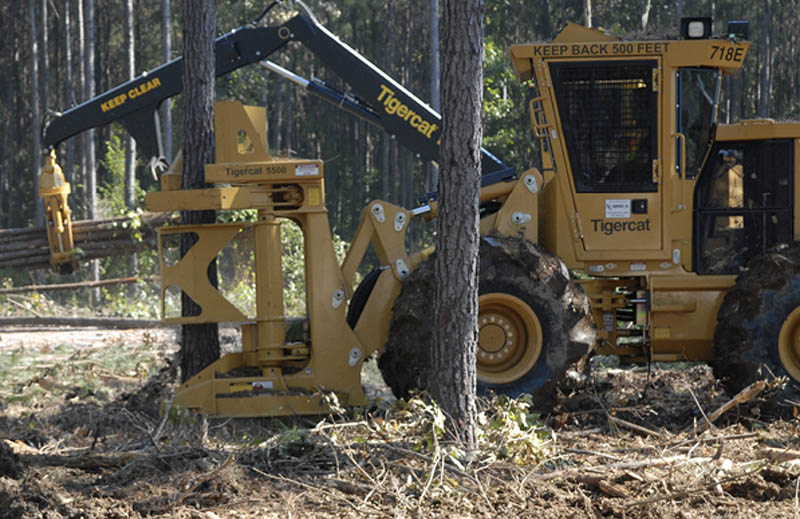



Figure 1. Forests provide many uses and amenities. (top left) A feller-buncher harvests trees. Wood from the tree trunk will be processed into a variety of wood products. (top right) Forests provide opportunities for recreation. (bottom right) Wildlife, like these white-tailed deer, use forests to find food and cover. (bottom left) Forests protect soil from erosion and filter sediments to keep water clean. Forests also provide many other ecosystem services, such as producing oxygen and storing carbon.
Forest Uses
For thousands of years, people have depended on one of the most valuable natural resources for food and shelter—the forest. By becoming involved with 4-H Forestry, you can learn about this great natural resource and how to care for it. You will have the opportunity to learn many interesting facts about forests and put them to good use. 4-H Forestry projects offer exciting activities for everyone, whether you live in the city or the country.
You will learn and be able to explain to others why trees are important for the many products that people need, as well as recreation, natural beauty, wildlife, and the environment (Figure 1). You will be able to identify trees by recognizing leaf, bark, and other species characteristics, and you will discover why forests are known as the most renewable natural resource we have. 4-H Forestry is your ticket to adventure. Your involvement is limited only by your imagination.
Mississippi’s forests are very productive. Our state has fertile soils, a long growing season, and precipitation well distributed throughout the year. Forests comprise about 65 percent of the state’s land area—19.6 million acres. Hardwood timber is most common in Mississippi, but pine volume and area are significant. Forests and forest products provide over 61,000 jobs in the state. For all agriculture, timber harvest is third behind poultry and soybean production. With value-added processing of timber, wages paid, and ancillary spending, the forest industry contributes over $13 billion to the state economy every year.
How Trees Grow
All trees have roots, a trunk, and a crown (Figure 2). Roots serve to anchor a tree in the soil and keep it from falling over. Root hairs on fine feeder roots take up water and nutrients from the soil so the tree can make food and grow. The trunk or stem supports the crown.

Figure 2. Anatomy of a tree.
The crown is made up of branches, twigs, and leaves. Leaves use water transported from the roots and carbon dioxide from the air to produce food for the tree. Leaves use sunlight to produce sugars through a process known as photosynthesis. In addition to producing sugars for the tree, photosynthesis produces oxygen. So trees, like all plants, play a crucial role in supporting life on Earth.
The trunk is the part of the tree that provides most of the wood products we use. It holds up the crown and acts as a passageway for nutrients that flow up and down the tree. The trunk is made of xylem tissue, which transports water and nutrients from roots to the crown. Active xylem tissue is called sapwood. Inactive xylem tissue no longer transports water and is called heartwood. It helps support the tree as it grows.
Three parts of a tree—the root tips, the cambium, and the buds—are actually the only parts that grow. Root tips grow into the soil out from the tree for water and nutrients. The cambium is a layer of cells just inside the bark of the roots, trunk, and branches. You can’t see this cell layer with just your eye, but it makes the tree increase in diameter. New wood cells are produced on the inside of the cambium, forming annual rings. Depending on the tree species, wood produced by the cambium differs in spring and summer. So, on these species, each annual ring is comprised of early or spring wood and late or summer wood.
The cambium also produces new bark cells on the outside. This is why the bark of older trees is rough, furrowed, and sometimes scaly. Old bark does not grow, so it cracks and breaks apart as new bark is produced beneath it. Just beneath the bark, other cells move food made in the leaves back down to the other parts of the tree. This innermost layer of bark is called phloem tissue.
The buds are the most visible growth area of a tree. The main stem of the tree and branches grow in height and length through the terminal bud. Leaf buds grow into leaves, and flower buds produce flowers that produce fruit and seeds.
Forests and Forest Succession
A forest is more than just a group of trees. A forest is a living community of trees, animals, and other plants (Figure 3). A forest is a place of endless activity, but you may have to look closely to see it. Trees, plants, birds, mammals, fish, reptiles, and insects live and die in the forest. It is a cycle of life. Forests will vary according to the soils and climate across the country. In the western United States, there are the Rocky Mountain, Sierra Nevada, Cascade, and Pacific Coast forest types. In the eastern United States, there are the Northern, Central Hardwood, and Southern forests.

Figure 3. Forests are communities of many plants and animals interacting with the environment and living together, ecologically supporting one another.
At smaller scales, forests will differ according to typography and drainage. Trees have evolved adaptations to particular environmental conditions. For instance, forests in southern Mississippi have adapted to different disturbance events, such as hurricanes. The vegetation in southern Mississippi contains many plant species adapted to periodic tropical storms. These species have evolved to survive occasional high winds and saltwater intrusion.
Forests gradually change over time, primarily in response to the changing amount of light. Open ground becomes seeded with grasses, forbs, bushes, and trees. At first, grasses and forbs dominate the vegetation (Figure 4). However, this vegetation gives way to shrubs and trees as they grow. Trees that grow in open ground are adapted to full sunlight. They are known as pioneer species, such as pines, sweetgum, and yellow poplar. As these trees mature, their shade may prevent their own seed from surviving germination. Instead, other species having more shade tolerance (adapted to more shade) will grow, including oaks and maples. Again, as these species mature, their shade may prevent their own seed from surviving germination. So other trees species adapted to growing in even greater shade will germinate and grow, including beech, hickories, dogwood, and hornbeam. This gradual process in the change of forest communities over time is known as succession.
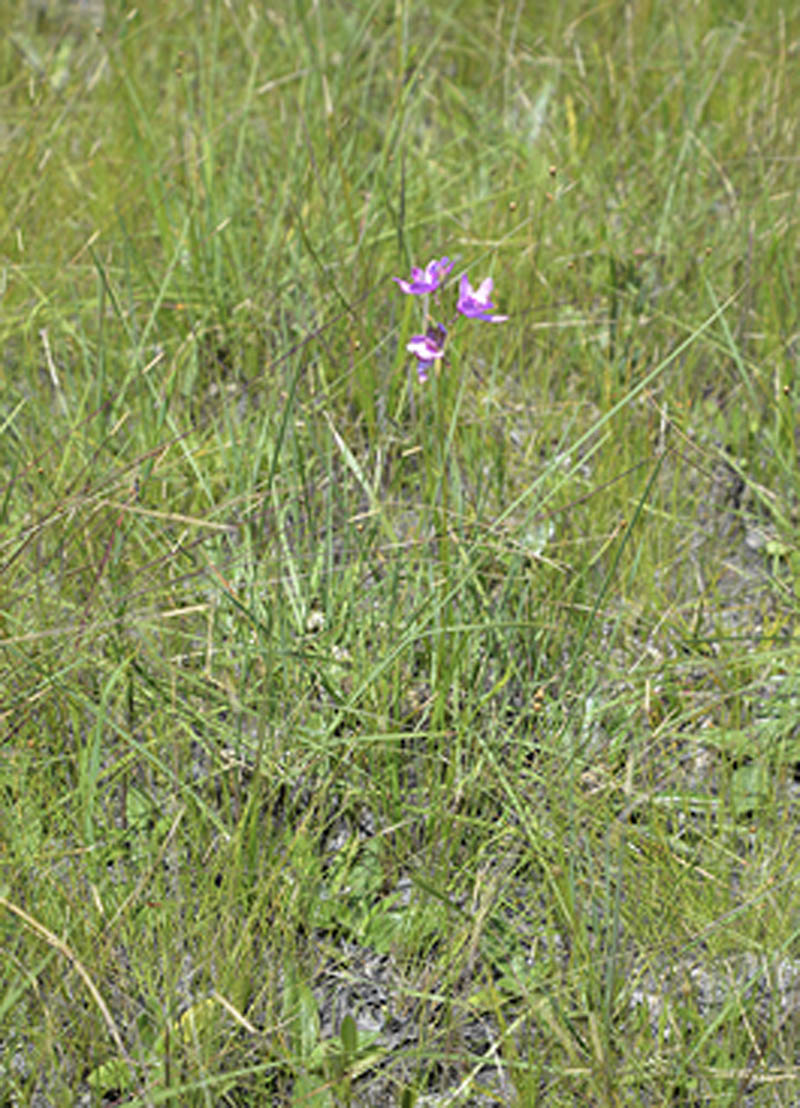
Figure 4. (top left) Periodic prescribed fire helps maintain early successional stages dominated by low-growing vegetation such as grasses and forbs. (top right) Pioneer trees and shrubs become established in open areas, gradually dominating the ground vegetation. (bottom) As pioneer tree species mature, other tree species become established in their shade, gradually changing the nature of the forest. Shown here is a later successional stage of bottomland hardwoods containing multiple species of oak, hickory, maple, and gum.


With different forest communities, different wildlife will occupy those forests. Bobwhite quail prefer open habitat dominated by grasses and forbs. As bushes and trees grow, turkeys and rabbits tend to occupy this habitat. As forest cover increases, deer and squirrels find food and cover. In other words, succession of forest communities affects wildlife living in the forest as much as the trees.
Southern Forests and Fire
Southern forests evolved with fire. Frequent, low-intensity fires were historically common, and many tree species evolved adaptations to these fires, including southern yellow pines and upland oaks. The southern yellow pines evolved thick bark. Longleaf pine, in particular, is very well adapted to frequent, low-intensity fire even as a seedling. Many upland oaks can sprout back after a fire, developing an extensive root system before making substantial stem growth.
Prescribed burning in Southern forests has many beneficial uses (Figure 5).
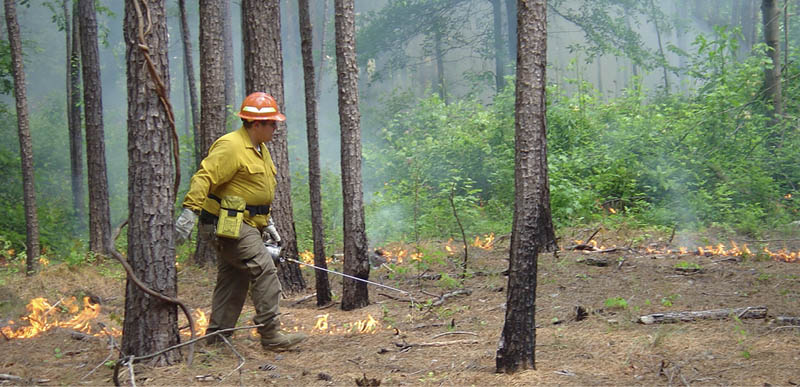
Figure 5. Southern pine forests are adapted to periodic, low-intensity fire. Here, a Mississippi Forestry Commission technician sets a prescribed backing fire in strips.
Certainly, periodic burning reduces the fuel load. As Native Americans understood, fire improves access through the woods by managing vegetation. Low-growing species are easier to walk through than thick, midstory vegetation. Prescribed burning can encourage regeneration of southern yellow pines and upland oaks. Finally, prescribed fire promotes wildlife habitat by setting back successional stages to ground vegetation. Having more low-growing vegetation provides food and cover to a variety of wildlife, including deer, rabbits, and turkey (Figure 6).
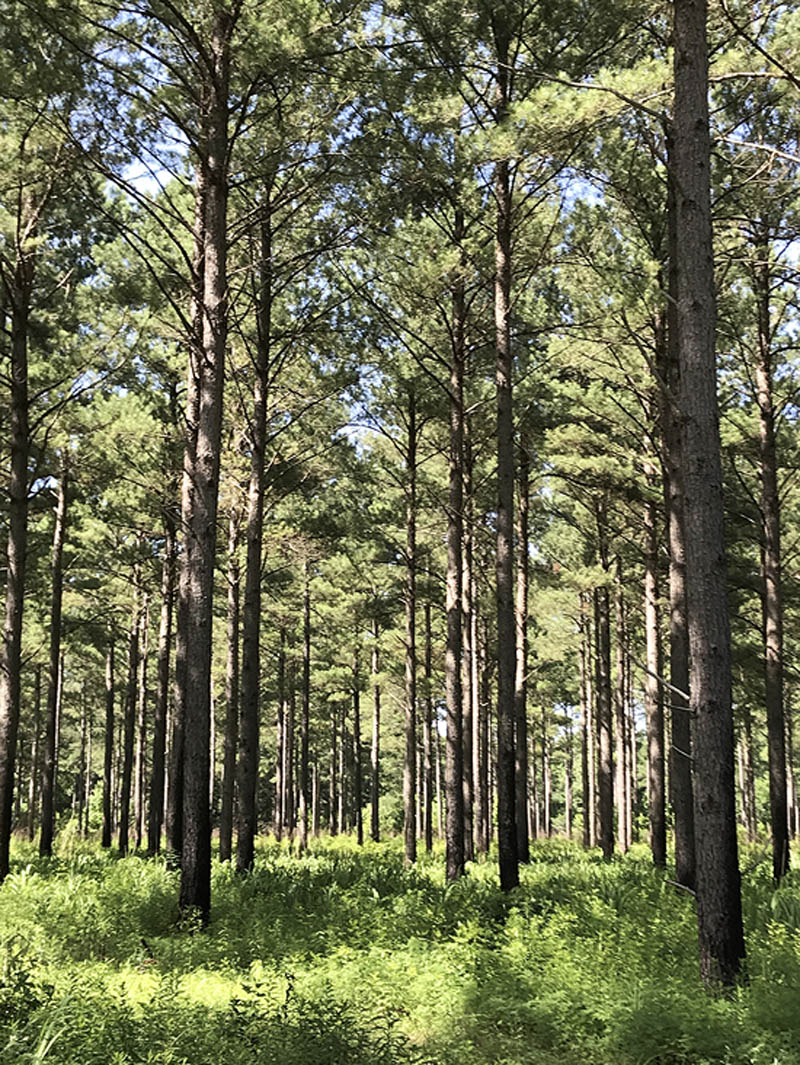
Figure 6. Proper vegetation management in a pine forest includes the use of selective herbicides and prescribed fire to encourage ground vegetation to grow. This type of low-growing vegetation could support a deer through the summer.
Forestry and Foresters
People have studied and learned about nature and have grown to understand ecosystems and the consequences of different management actions. Forestry is defined as the science, art, and practice of managing and using forests, woodlands, and other natural resources of the land to benefit people and the environment. Forestry includes activities such as
- identifying, measuring, and cutting the “proper” trees
- protecting trees from wildfire, insects, and diseases
- promoting ecosystem function for environmental benefits
Forestry involves all of the above and more. People go to college to study forestry, then work for years in that field and never stop learning new things. Forestry is a subject you can enjoy while you learn.
Foresters work in many types of jobs and are employed by many different organizations.
One forester may be concerned with harvesting trees, while another plans and supervises the forest regeneration. Professional foresters deal with problems concerning trees, soils, watersheds, rangelands, wildlife, and recreation. Others become administrators, resource managers, researchers, or educators to manage, better understand, and teach others proper forest stewardship.
As you work in 4-H Forestry, you will become more familiar with a forester’s role. You will probably meet and talk with several professional foresters about their responsibilities. One thing that foresters share is a deep, personal connection to the forest. You may also develop this passion by becoming involved in 4-H Forestry.
Sustainable Forestry
You have learned that forests are a renewable natural resource when properly managed. Cutting trees and using the forest are part of sustainable forestry. Two aspects of sustainable forestry enable every generation to use forests: First, forest regeneration follows a harvest. Second, on a larger scale, annual harvests are conducted at or below the annual growth of the forests.
A vital part of sustainable forestry is having a written forest management plan. This plan includes using standards for sustainable forestry, following them, and having periodic third-party inspections verify compliance with the plan. In addition, best management practices that protect the environment are followed. Other aspects of sustainable forestry include promoting forest health and wildlife biodiversity, protecting special sites, managing forest aesthetics, and using qualified professionals while conducting forest operations.
Harvesting and Forest Regeneration
How forests are harvested determines how they will be regenerated. In uneven-aged forest management, partial harvests remove trees of varying sizes and ages, leaving behind trees of multiple ages (Figure 7). Harvests are made generally every 10 years or so. Trees are cut from every age class in an attempt to leave a sufficient number of good-quality trees to maintain a profitable future harvest and provide adequate space for natural regeneration. Using uneven-aged management with loblolly and shortleaf pines requires periodically spraying selective herbicides to control encroaching hardwoods. Meanwhile, prescribed fire is often used in all-aged management of longleaf pine.
Figure 7. In uneven-aged forest management, periodic partial harvests maintain a forest structure with all age and size classes.
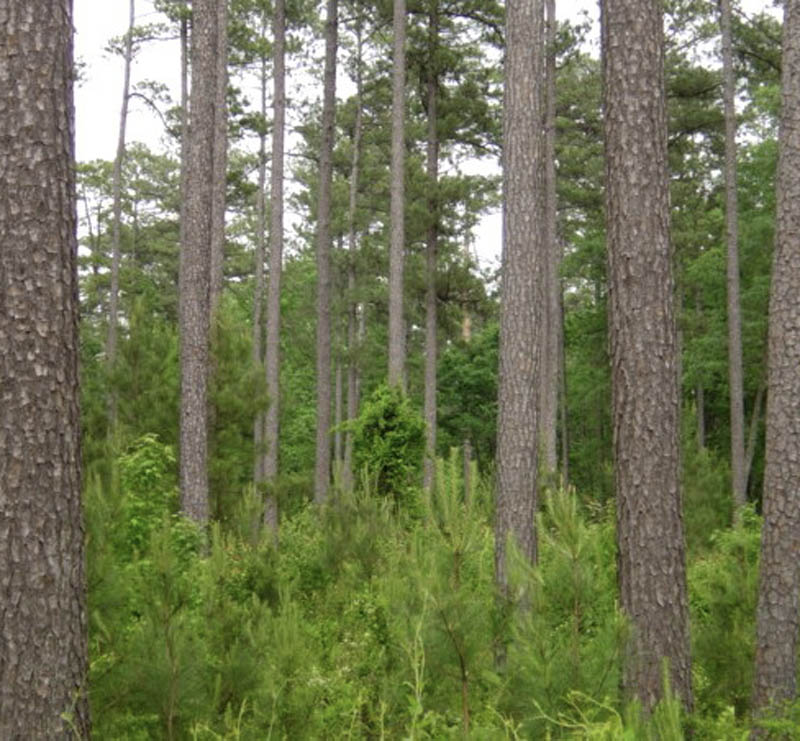
With even-aged management, the forest is completely removed and new trees planted. There are several methods available to do this, but the most common is called clearcutting. Site preparation after harvesting removes unwanted vegetation (Figure 8). After the site is ready, artificial regeneration (or natural regeneration in some special scenarios) is conducted to plant trees on the site to establish the next forest (Figure 9). Artificial regeneration is used for planting sites where desirable tree species are lacking. Other advantages of artificial regeneration are the ability to control initial tree spacing and the opportunity to plant genetically improved tree seedlings.
Figure 8. Herbicides are sprayed during site preparation to kill all unwanted vegetation on a site before planting trees.
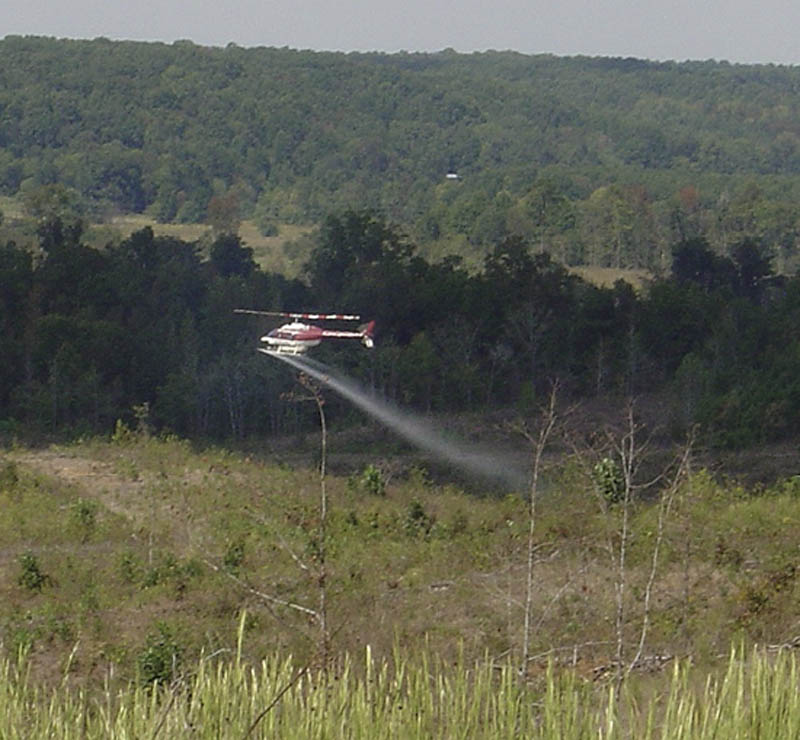
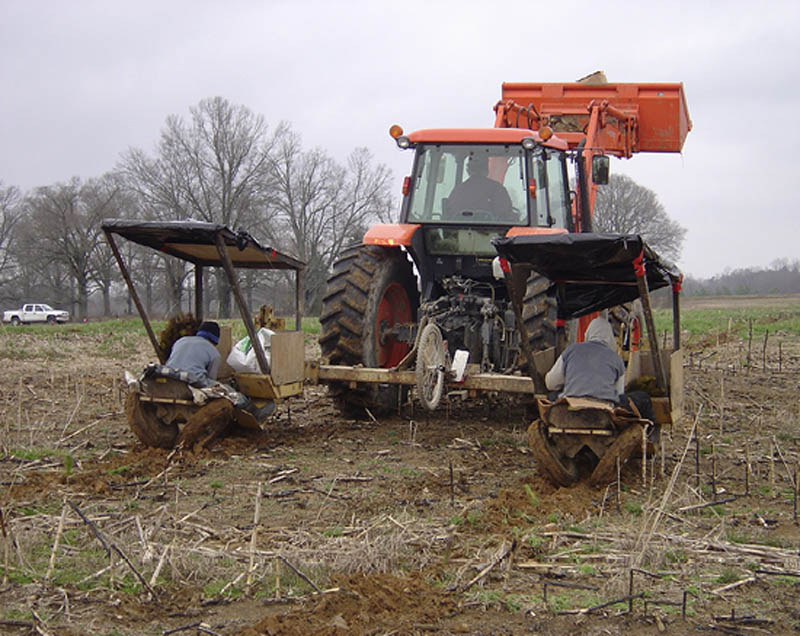
Other options for even-aged management use natural regeneration through seed tree (Figure 10) and shelterwood systems. With these methods, most of the timber is harvested, but some uniformly spaced trees are left behind as a seed source from which to regenerate the stand.The difference between seed tree and shelterwood is the number of seed trees retained. With seed tree regeneration, about 4 to 15 trees per acre are left. With shelterwood, greater numbers of seed trees are left depending upon management goals. The tree species to be regenerated determines which method is more appropriate. For instance, seed tree is adequate for loblolly pine, and shelterwood is better for oak species.
Figure 9. In artificial regeneration, trees are planted after the site has been prepared.

Figure 10. A seed tree harvest leaves regularly spaced trees to provide seed for growing the next forest.
Seed trees should have good form and be healthy, wind-firm, and prolific seed producers. These trees not only provide the seed for the next generation but also continue to grow and increase in value. After a good stand of young trees has established, the seed trees are harvested for wood and room is made for the new stand.
Forest Improvements
Partial harvests are conducted in forests with even-aged management. Such cutting is an important part of managing a forest during its life cycle.
Timber stand improvement (TSI) is sometimes prescribed to help improve the health of a timber stand. One common TSI operation is removing low-quality, diseased, or other undesirable tree species in preparation for natural regeneration in hardwood management. Herbicides are used to kill unwanted hardwoods individually through stem injection (Figure 11). With hardwood management, TSI is done throughout the rotation, since unwanted hardwoods may seed-in at different ages of the stand. In older hardwood stands, TSI is done as part of thinning.

Figure 11. Thinning in a pine forest improves stand growth, forest health, and overall stand quality by retaining the best trees for final harvest.
Insect pests and diseases annually destroy more timber than fire. Often, we don’t realize they are present in the forest until the damage has been done. Foresters must constantly be on alert for signs of a problem.
As pine plantations mature, trees compete with each other, and weaker trees die. This process is known as self-thinning. When stands reach this condition, all the trees are under stress from competition for site resources: sunlight, water, and soil nutrients. Thinning (Figure 12) to relieve overcrowding and promote tree growth and forest health can prevent insect attack (Figure 13). The ability to select which trees to remove in thinning improves timber quality and forest health by allowing more site resources for the remaining, better trees to grow.

Figure 12. Timber stand improvement includes tree injection to remove undesirable hardwood species on an individual basis.


Figure 13. Overcrowding of pine trees can stress the stand, leading to insect attack by bark beetles (left) or deodar weevils (right).
Another forest improvement activity is release from competition. This is often seen in pine forest management when hardwoods encroach and lower productivity of the plantation. Selective herbicides are used to kill unwanted hardwoods while not harming the pines (Figure 14). Sometimes pine release is done early in the age of the plantation because site preparation may not have been adequate. Otherwise, pine release from competition is often done after the first thinning, when ground equipment can get into the stand to spray herbicides. Scheduling a prescribed burn after release is part of quality vegetation management to improve wildlife habitat.
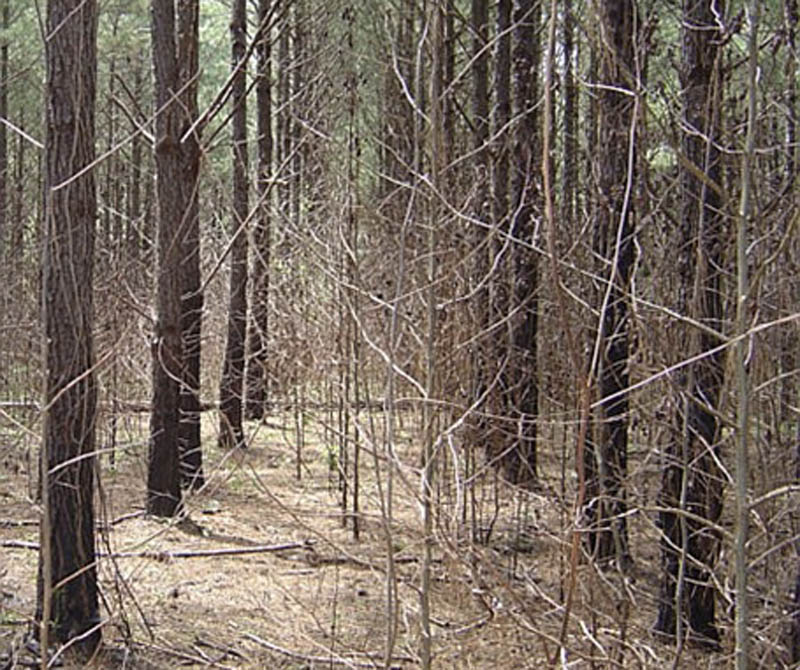
Figure 14. Selective herbicides sprayed in a plantation after its first thinning killed these midstory hardwoods, releasing the pines to fully use site resources.
Other types of forest improvement activities include:
- prescribed burning to reduce fuel loads, improve access, and enhance wildlife habitat.
- pruning lower limbs on crop trees to produce high-quality timber with minimal knots .
- applying herbicides in newly planted stands to control herbaceous weeds and improve seedling survival.
- applying fertilizer to promote tree growth. (Some industrial ownerships do this to shorten the rotation age for harvest.)
Best Management Practices
When conducting operations in forests, following certain guidelines will protect the environment. Most soils in Mississippi are highly erodible, so best management practices (BMPs) are necessary to protect the soil resource and prevent sedimentation in streams, lakes, and rivers. Such practices include using turnouts in road construction to move water off the road and prevent erosion, or installing culverts for stream crossings.
In addition, buffer strips along streams and water bodies allow filtration of potential sediments before they reach the water. These are known as streamside management zones (SMZs). Besides protecting water resources, SMZs provide corridors of cover across forest landscapes for movement of many wildlife species.
Mississippi BMPs are comprehensive. Through the Professional Logging Manager Program, loggers in Mississippi learn about sustainable forestry, Mississippi BMPs, logging and transportation safety, and business management. Their logger certification is necessary to haul wood to Sustainable Forestry Initiative-certified mills. This ensures that workers doing the logging understand sustainable forestry practices and know how to implement environmental protections by using Mississippi BMPs.
BMPs cover proper management practices not just for timber roads and harvesting, but also for site preparation, tree planting, and operations in disturbed areas. It is important to note that Mississippi BMPs are voluntary. Voluntarily following BMPs has prevented government regulation at the federal and state levels. Periodic audits conducted by the MFC have shown that compliance with Mississippi BMPs exceeds 90 percent in all categories.
Multiple Use Forestry
Forests are unique because they can be used in more ways than any other resource. A forest can provide timber, recreation, wildlife habitat, soil conservation, and water conservation—all at the same time and on the same land. We do not have to set aside areas for specific purposes, although forest managers sometimes do.
Because trees use carbon dioxide to produce food, forests and their management will play a major role in solutions to climate change. As you explore 4-H Forestry, consider the many, multiple uses of forests. Forests benefit people in many ways, so it is important to manage them for future generations. This is the goal of sustainable forestry.
Forestry Projects
There are many forestry topics that you can develop into a project. Check with your 4-H leader to find out which project/record sheets are currently available and to get copies of any reference publications listed for each project.
- Big Tree Contest
- Careers in Forestry
- Christmas Tree Production
- Collecting and Identifying Tree Leaves
- Collecting and Identifying Tree Seed
- Economic Benefits of Forests
- Firewood Production
- Forest Diseases
- Forest Fire Prevention
- Forest Insects
- Forest Mapping
- Forest Measurements
- Forest Recreation
- Nature Trails
- Orienteering: Navigating in the Woods
- Papermaking
- Products from Wood
- Reading Annual Rings
- Soil and Water Conservation
- Surviving in the Forest: Edible Plants
- Tree Identification
- Tree Planting
- Urban Forestry
- Wildlife Habitat
- Wood Identification
Additional Reading
MSU Extension publications are online at extension.msstate.edu/publications.
P0146 Know Your Trees
P0160 Tree Planting Is Easy
P1250 Forestry Terms for Mississippi Landowners
P1281 Timber Stand Improvement
P1473 4-H Forestry Project No. 7: Measuring Standing Sawtimber
P1612 Forestry/Wildlife Myths and Misconceptions
P1686 4-H Forestry: Making a Tree Scale Stick
P1864 Waterfowl Habitat Management Handbook
P1991 4-H Forestry Competition Handbook
P2179 Ecology and Management of the Northern Bobwhite
P2233 Streamside Management Zones and Forest Landowners
P2260 Are My Pine Trees Ready to Thin?
P2283 Prescribed Burning in Southern Pine Forests: Fire Ecology, Techniques, and Uses for Wildlife Management
P2402 Mississippi Recreational Gardens: Establishing a Backyard Wildlife Habitat
P2466 Ecology and Management of Squirrels in Mississippi
P2467 Ecology and Management of Rabbits in Mississippi
P2470 Managing the Family Forest in Mississippi
P2617 What Are Genetically Improved Seedlings?
P2822 Forest Soils of Mississippi
P3406 Wild Turkey Ecology and Management
P3508 Geocaching in Natural Resources: Fun with Forests around Us
P3562 The Economic Contributions of Forestry and Forest Products, Mississippi
P3597 Wildlife Find Food in Pine Trees, Too
Additional references that can be found online:
Guyton, John. (2013). Entomological extensions and activities for use with youth. https://www.plt.org/stuff/contentmgr/files/1/3820646635e731d560dd9b8406bb549a/files/entomological_activities_for_plt.pdf
Mississippi Forestry Commission. (2008). Mississippi’s best management practices (4th ed.). MFC Publication #107. https://www.mfc.ms.gov/programs/educational-workshops/publications/
National 4-H Forestry Invitational training material. https://4hforestryinvitational.org/training
The information given here is for educational purposes only. References to commercial products, trade names, or suppliers are made with the understanding that no endorsement is implied and that no discrimination against other products or suppliers is intended.
Publication 1205 (POD-04-22)
Revised by Brady Self, PhD, Associate Extension Professor, Forestry, and James Henderson, PhD, Extension Professor and Head, Coastal Research and Extension Center, from earlier versions by John Kushla, PhD, Extension/Research Professor (retired), Andrew Londo, former Extension Professor, and Thomas Monaghan, Extension Professor (retired).
The Mississippi State University Extension Service is working to ensure all web content is accessible to all users. If you need assistance accessing any of our content, please email the webteam or call 662-325-2262.





